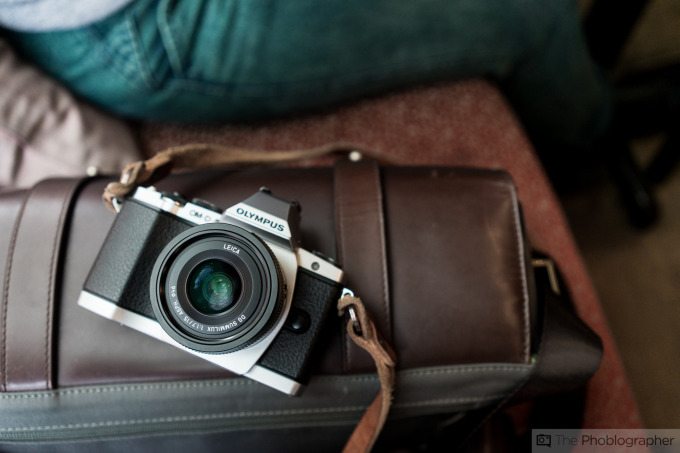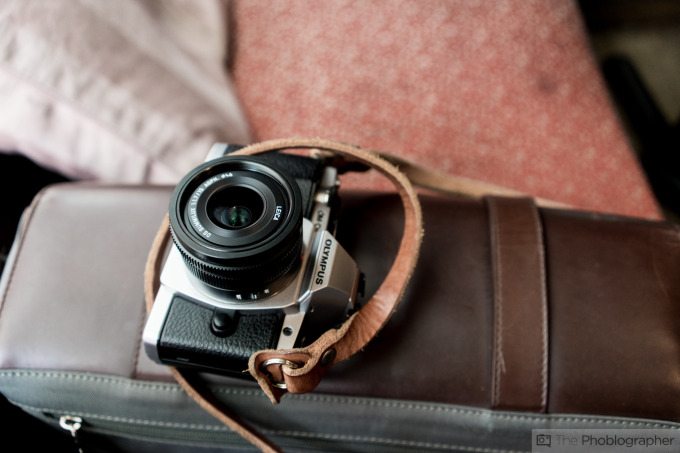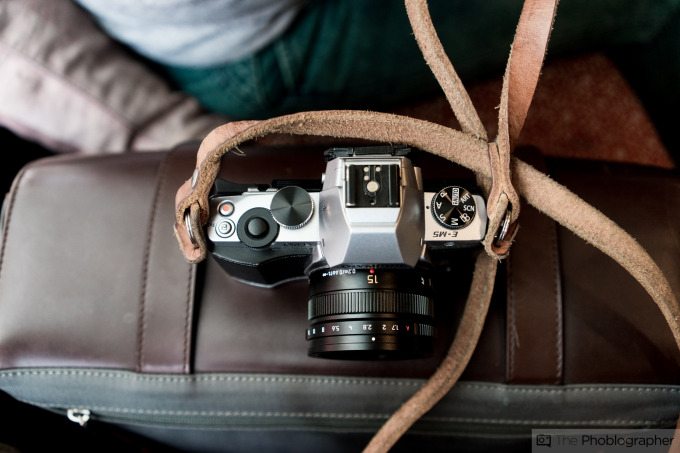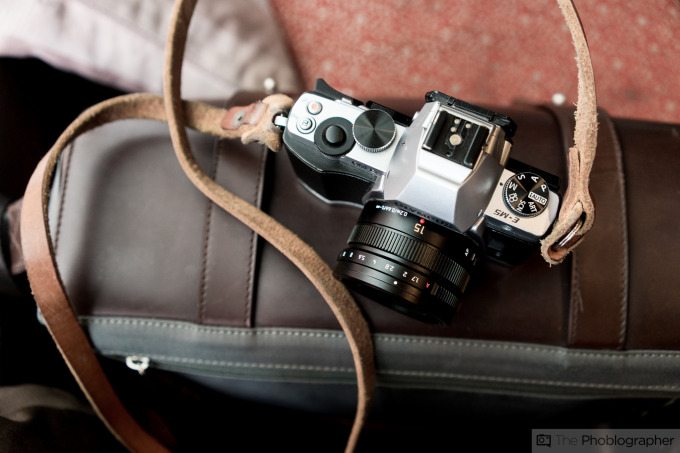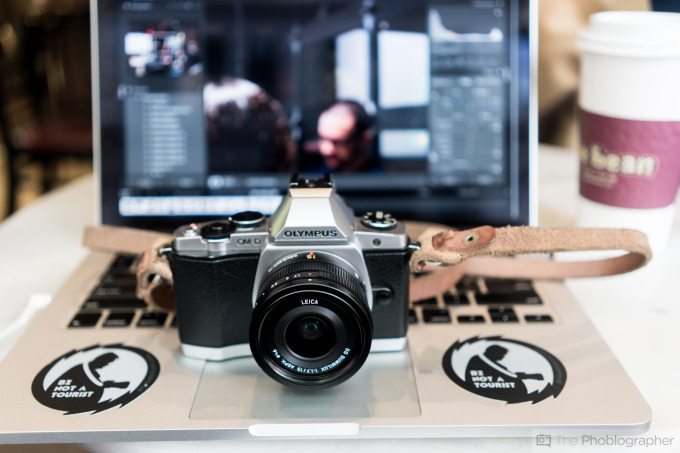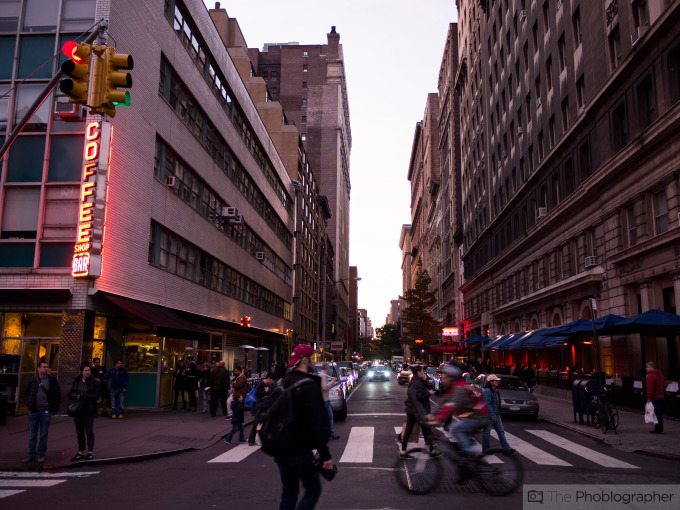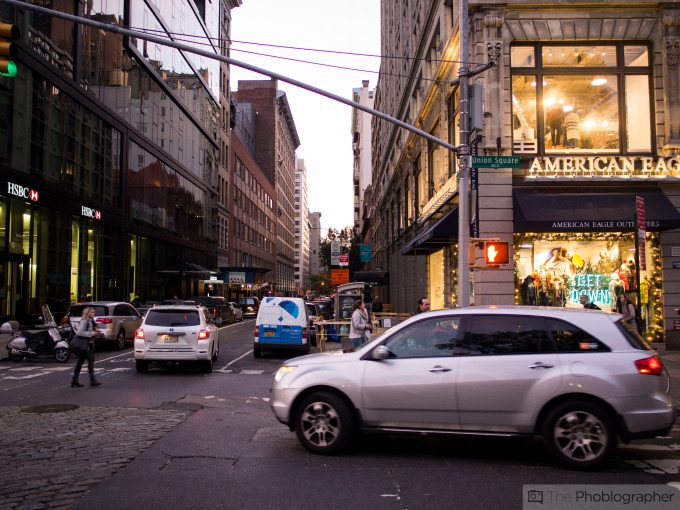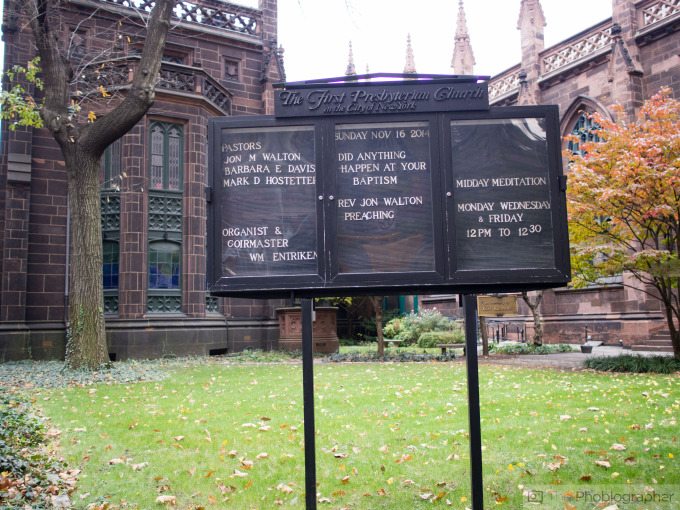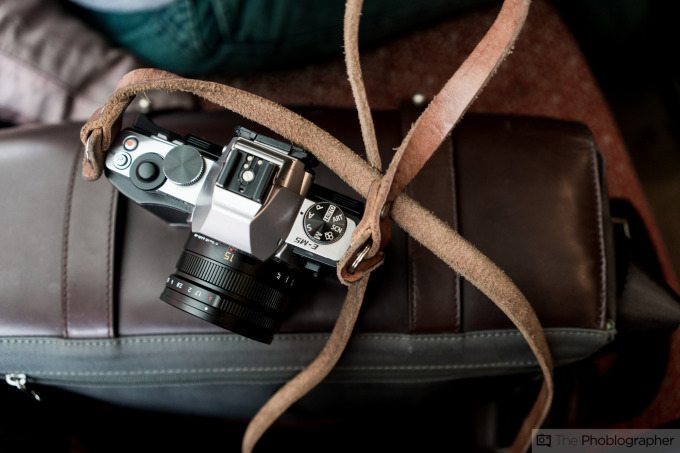The Panasonic 15mm f1.7 lens is a small, well designed lens for the Micro Four Thirds camera system–and we dare say that it is our favorite autofocusing lens for the system, too. Designed to be almost a pancake but with a wide f1.7 aperture, it pairs very nicely with some of the system’s medium to smaller camera. With nine elements in seven groups and seven aperture blades, it’s a fairly simply designed lens but whatever magic that Panasonic put into it makes the lens sing with pure image quality.
Introduced earlier this year, this lens is very heavily targeted at the street photographer and the person looking to take general candids and images due to its 30mm field of view.
And when our review period is over, we’re going to be very sad to say goodbye to it.
Pros and Cons
Pros
– Super sharp
– Beautiful bokeh when you get it
– Build quality that puts Olympus lenses to shame
– Super small
– Aperture ring is so pleasant
– Super fast focusing on Olympus Micro Four Thirds cameras
Cons
– We didn’t have a single major problem with this lens, except for the price.
Gear Used
We tested the Panasonic 15mm f1.7 on the Olympus OMD EM5.
Tech Specs
Specs taken from the B&H Photo listing
| Features | |
|---|---|
| Autofocus | Yes |
| Physical | |
|---|---|
| Filter Thread | Front:46 mm |
| Dimensions (DxL) | Approx. 2.26 x 1.42″ (57.5 x 36 mm) |
| Weight | 4.06 oz (115 g) |
Ergonomics
The Panasonic 15mm f1.7 is a truly beautiful lens that very much alludes to the Leica lenses that it is meant to mimic. Every from the aperture ring, look, feel, and experience just screams Leica. And for the Micro Four Thirds user, you’ll surely become smitten with it. We start our ergonomic tour by looking at the front of the lens–which is mostly plain with no lens hood.
Here you also get a view of the side of the lens–which houses a switch for MF/AF control.
When you look at the lens from up top, you’ll notice the aperture ring. Though the aperture ring only works with Panasonic camera bodies, it’s still a very nice touch and feels great in the hand. In fact, we feel that this adds to the overall ergonomic experience.
For some odd reason, Panasonic completely left out a distance scale for focusing. Perhaps this was to keep the lens’s size down. In that case, we guess it makes sense.
For what it’s worth, the lens seems to pair perfectly with the Olympus OMD EM5.
Build Quality
The build quality of this lens makes it feel very much like a Leica M mount offering. However, this lens has autofocus and doesn’t have the buttery smooth focusing that Leica lenses do. It isn’t weather sealed either, but the metal exterior makes it feel so much better in your hand.
Ease of Use
Using this lens is really simple: just mount it on, focus, shoot and enjoy. It’s really just as simple as that. During our tests we used it for street photography and candids–and it usually nailed its target very well with some of the best speed that we’ve seen in the mirrorless camera world. But the problem has more to do with manual focusing. We really wanted a depth of field scale and a working manual focus scale for street work.
Honestly though, that’s not a big problem if you consider how wide the lens is and the speed at which it focuses.
Autofocus

Whoa…
No, really–this lens has to be the fastest focusing lens that we’ve tested from either Olympus or Panasonic. Part of this comes from how wide the focal length is but the other part comes from just how quick the algorithms work. During our time with the lens, it also never missed its focus unless we screwed up. This goes for both low lighting and good lighting.
If that isn’t a big achievement, we’re not sure what is.
Image Quality
The image quality from the Panasonic 15mm f1.7 is almost like no other. It’s beautiful, sharp, and very true to life, but not very contrasty nor very saturated. These are amongst the lens’s biggest strengths coupled with how fast it focuses.
The biggest competitor that this lens may have is the Olympus 17mm f1.8 or Panasonic’s own 20mm f1.7 II. Of the three, this lens has to be my favorite when it comes to the image quality but Olympus wins for the snap back focusing ring. As far as image quality goes though, this lens seems to best both offerings.
For most shooters, this lens will be plenty sharp enough and will also deal distortion quite well. In fact, we didn’t have much of any problems with it except in some of the corners–but we have to come to expect that. The sharpness of the lens is surely its strongest point, but it’s nowhere as contrasty or saturated as the Olympus offerings.
Sharpness
Again, the sharpness is perhaps the strongest feature of this lens. It’s wonderful wide open and you may not want to stop it down. In fact, it only marginally improves until you start to see diffraction at around f5.6. Because you’re working with a Micro Four Thirds sensor, you’re best off not really stopping it down to begin with unless you’re using artificial lighting.
This lens isn’t as sharp as the company 42.5mm f1.2 lens, but it’s very close and at a much more affordable price. But also as we stated earlier, it out does most of its closest competitors.
Bokeh
When it comes to bokeh, we’re really, really pleased with the results. It’s very creamy though borderline hazy–but we still have no reason to fret over it. The lens has seven aperture blades, but we wonder what the bokeh would be like with more blades. Still, we don’t have much of a complaint given that this lens has some of the best bokeh of any of its close competitors.
It can’t hold a candle to the Voigtlander 17.5mm f0.95 though.
Color Rendition
The color rendition from this lens is a bit muted right out of the camera, but we’ve come to expect that from Panasonic. The muted look is countered a little bit by the punchy vibrance that the sensor in the OMD has. If you’re using an Olympus body, expect to do a bit of post-production to improve the color more but not a whole lot.
We felt that the color especially wasn’t so strong when it comes to reds–and sometimes we needed to underexpose to get more details there.
Color Fringing
During our tests, we didn’t find any purple fringing in images right out of the camera, but instead only when the shadows were pushed quite a bit. This is to be expected, and it is easily nerfed in Adobe Lightroom. So there’s no reason to sit there and cry or complain that it bothers you in DPReview’s forums.
For the record, here is in image with much less editing done. And as you can see, there is no fringing.
Extra Image Samples
Conclusions
Likes
– Small size
– Nice build quality
– Sharp images
– Fast focusing
Dislikes
– Colors could be better but it isn’t something to cry over
– Needs a depth of field scale
Our gripes are honestly quite minor about the Panasonic 15mm f1.7, though they’re still there. But those gripes will probably just be ours. Panasonic put out a fantastic product that every Micro Four Thirds owner should get their hands on lest they miss out. This lens focuses super quickly, feels great, is sharp, small, and a perfect lens for any Micro Four Thirds camera due to its compact size. It also keeps the overall package much more low profile–plus it blends in with the retro looks of some of the cameras.
We’re sad to say goodbye to this lens, but we encourage you to get it if we had to choose one single focal length for the system.
We award the Panasonic 15mm f1.7 five out of five stars. Want one? Check B&H Photo for current prices.
Recommended Cameras and Accessories
– Olympus OMD EM5: the perfectly sized camera with the build quality to match this lens. You can’t go wrong here.
– Panasonic Gx7: Panasonic’s answer to best working with this lens. This camera’s rangefinder like ergonomics will make many Leica users feel right at home.


